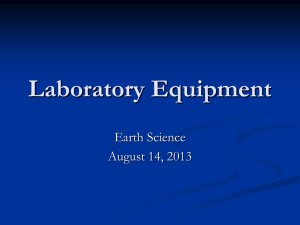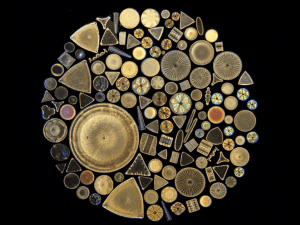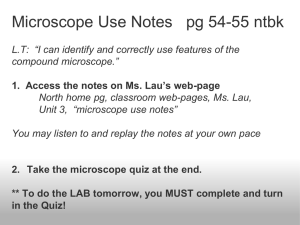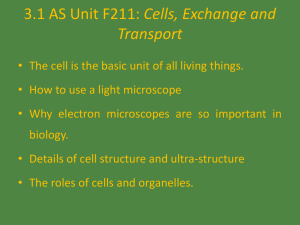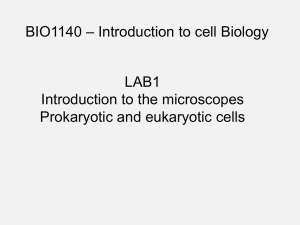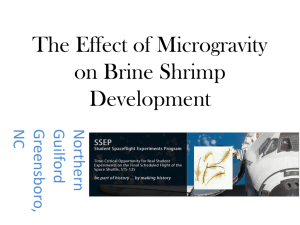Photography through the Microscope David Linstead PhD
advertisement
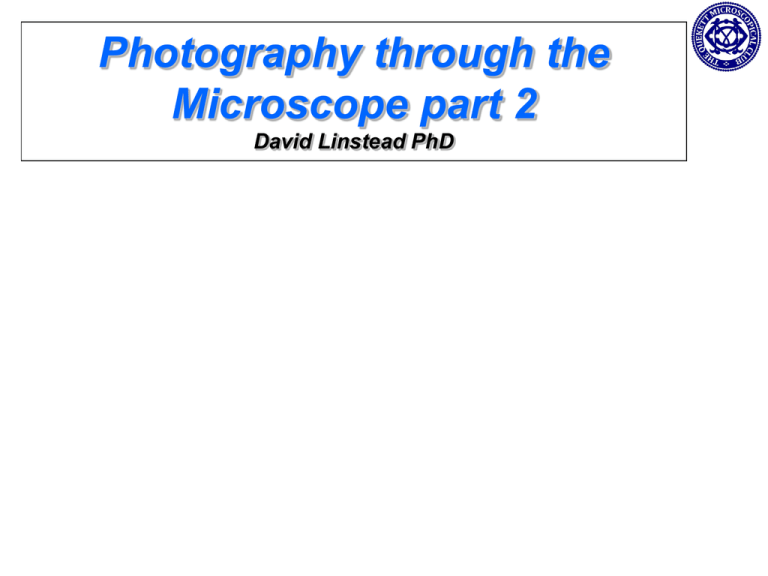
Photography through the Microscope part 2 David Linstead PhD Photography through the Microscope Two ‘superwidefield’ eyepieces with T2 threads which can be used to attach compact cameras. Primarily designed for astronomical telescopes these work well on microscopes, but provide no compensation for CA. These are especially useful for zoom cameras with larger lens diameters such as the Canon G9 with its X6 zoom. Photography through the Microscope Canon G9 with adapter tube and ‘superwidefield’ eyepiece attached ready to be inserted into a microscope eyepiece tube. The G9 also has no remote shutter release so must be used with the self timer, however it can instead be controlled from a computer. Photography through the Microscope • Post processing of images – Images captured through the microscope will nearly always require some form of processing in an image editor to crop out unwanted parts of the image and to correct faults such as colour casts, chromatic aberration and the dust and dirt spots that somehow always find their way onto the image. – Expensive software is not necessary, though Photoshop Elements can be a good investment, cheaper alternatives such as Serif PhotoPlus for £10 or totally free PhotoScape and GIMP can be just as effective. – Images can also be dramatically enhanced by a technique called stacking. – Stacking overcomes the problem of the extremely shallow depth of focus seen in microscope images. A sequential series of images are captured focussing through the full depth of the subject. These are then combined by software to give a single extended depth image. – Stacking programmes such as Helicon Focus and Zerene Stacker cost around £100, but Combine ZP is free and works well though it is a little user unfriendly. Photography through the Microscope Now some images captured using the various adapters and cameras I have illustrated Dandelion pollen X40 objective and Coolpix 4500 camera with threaded X10 eyepiece and remote release Photography through the Microscope Hogweed pollen X25 objective and Coolpix 4500 camera with threaded X10 eyepiece and remote release Photography through the Microscope Rapeseed pollen X40 objective and Coolpix 4500 camera with threaded X10 eyepiece and remote release. Stacked with Helicon Focus software Photography through the Microscope Tilia (European Lime) pollen X40 objective and Coolpix 4500 camera with threaded X10 eyepiece and remote release. Stacked with Helicon Focus software Photography through the Microscope Chromatic aberration Tilia (European Lime) pollen X60 planapochromat objective Canon G9 super widefield eyepiece, showing chromatic aberration (colour fringing) Photography through the Microscope Bee mouthparts X4 objective Nikon 4500 with remote release stitched from four individual images using a free software program (Microsoft ICE) Photography through the Microscope Nosema apis, negative stain X40 objective Coolpix 4500 with threaded eyepiece and remote release Photography through the Microscope How stacking helps to clarify an image Crocus pollen Canon 40D single focal plane Crocus pollen, series of focal plane used in a stack animated to show how the stack builds up Photography through the Microscope Bee hypopharangeal gland Nikon Coolpix 4500 remote release, stack with Helicon focus Photography through the Microscope Bee hypopharangeal gland Nikon Coolpix 4500 remote release, stack with Helicon focus, animation of individual frames of stack Photography through the Microscope Diatom, Canon G9, super widefield eyepiece, showing vignetting that can be removed by increasing the zoom, and CA (purple fringing) Photography through the Microscope Mounted diatom X40 objective Nikon Coolpix 5100 with tube adapter and 28 mm threaded eyepiece, self timer Helicon Focus stacked image Photography through the Microscope Water flea (Simocephalus vetulus) X10 objective, darkfield illumination Nikon Coolpix 5100, eyepiece clamping adapter, self timer

